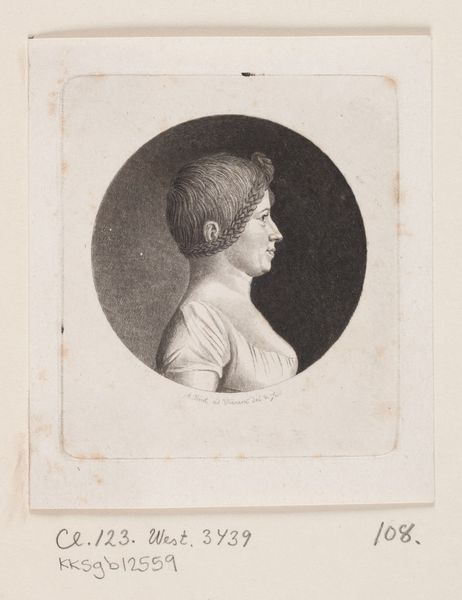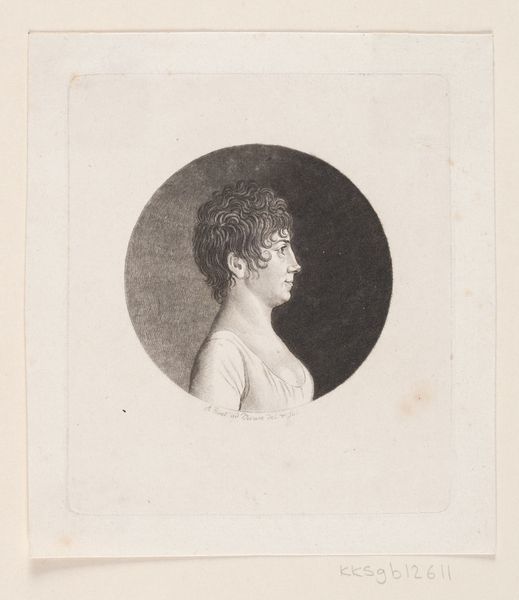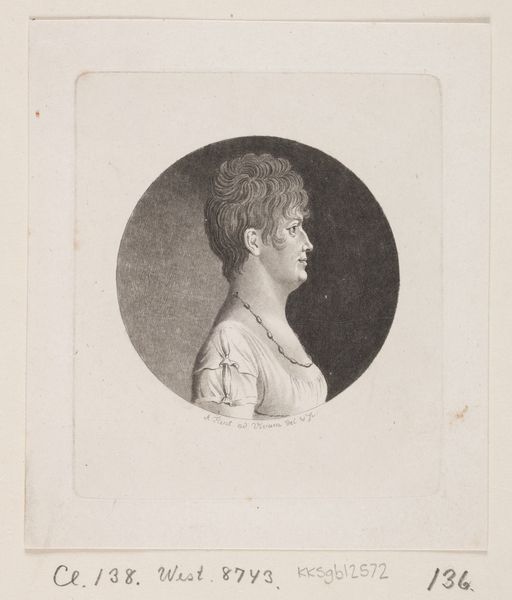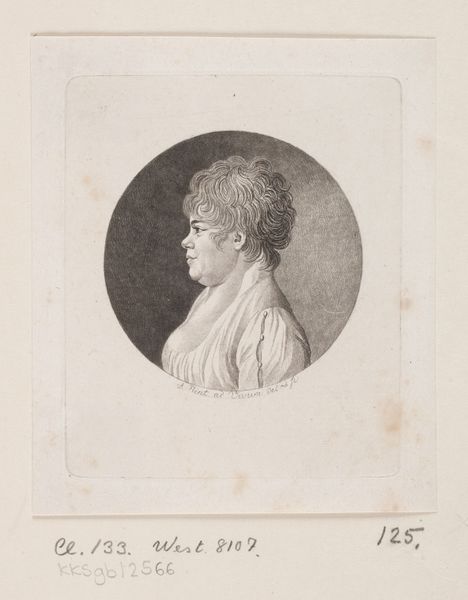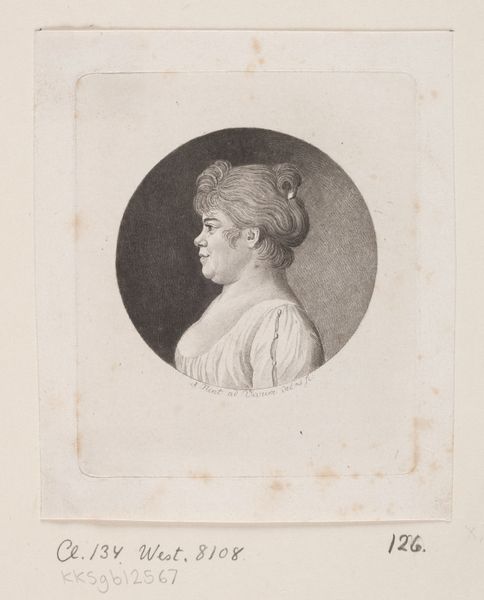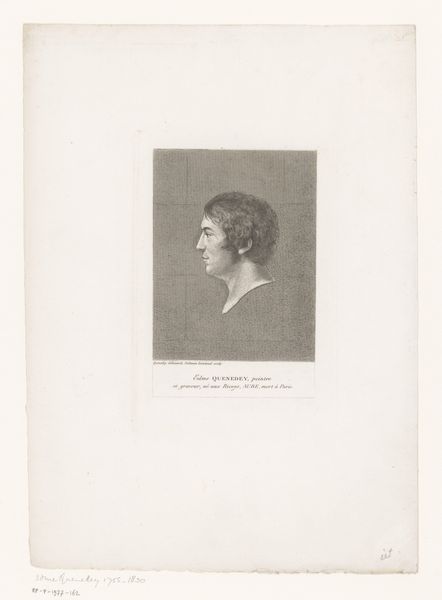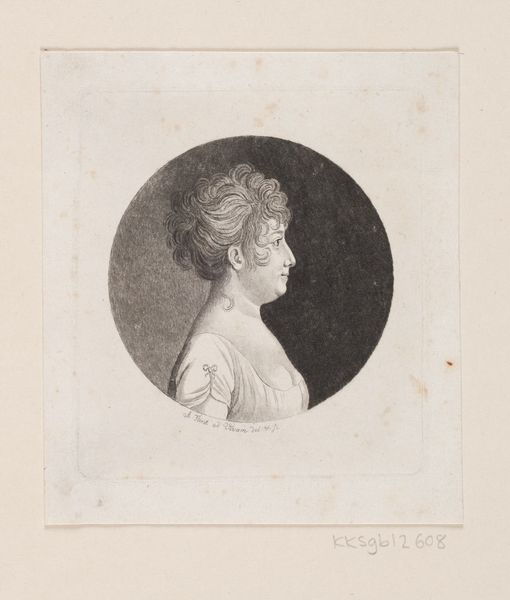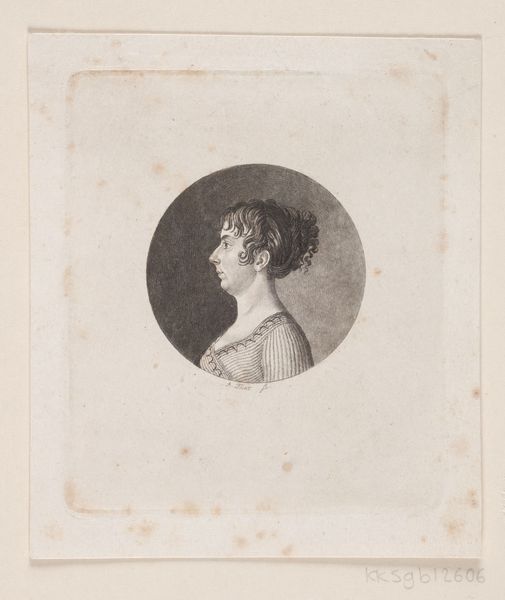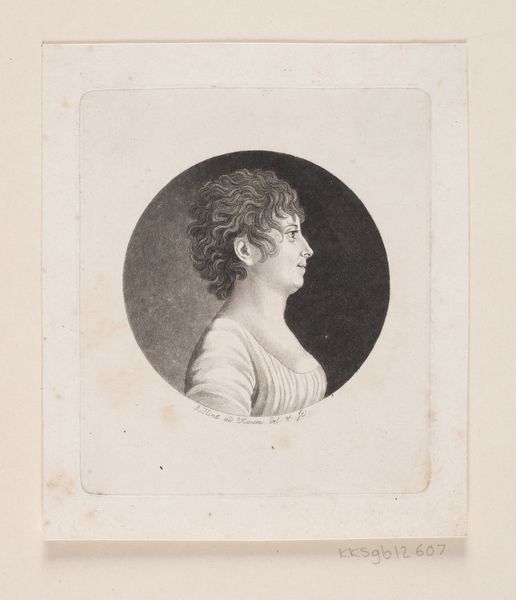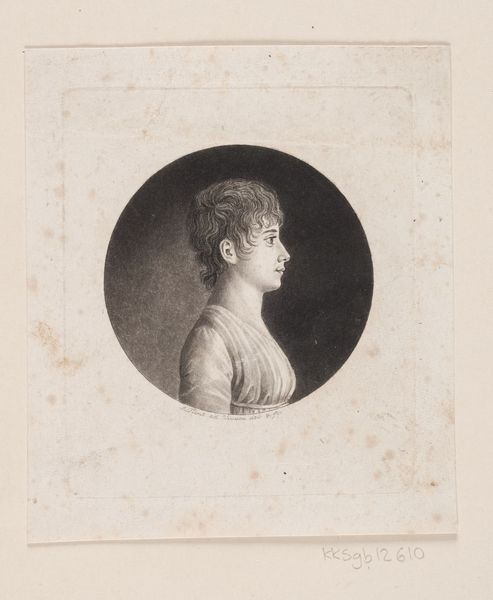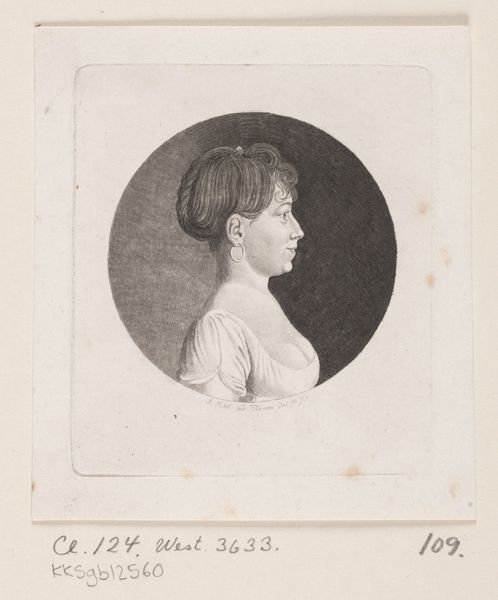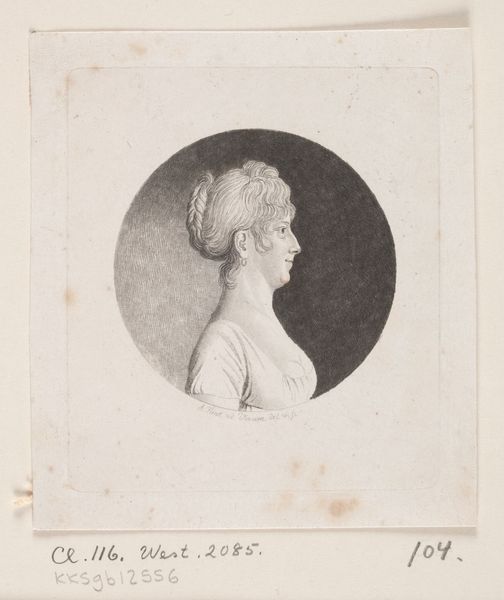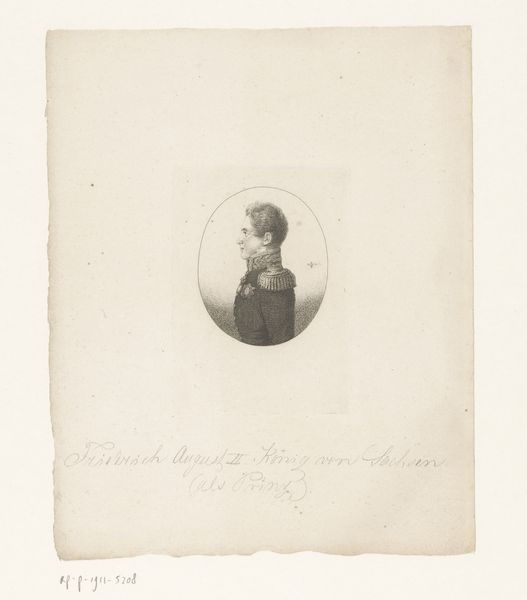
drawing, print, etching, pencil
#
portrait
#
drawing
#
neoclacissism
# print
#
etching
#
portrait reference
#
pencil drawing
#
pencil
#
academic-art
Dimensions: 58 mm (None) (billedmaal), 95 mm (height) x 82 mm (width) (plademaal)
Curator: This delicate drawing, executed in pencil and etching, depicts Caroline Marie Nordberg, born in 1767. It’s held here at the SMK, Statens Museum for Kunst. Andreas Flint captured her likeness in this neoclassical style. Editor: The most striking thing is its contained, almost ethereal quality. The soft shading and simple composition create a sense of serenity, as if glimpsed through time. Curator: The circular frame, or roundel, was a common neoclassical device to invoke antiquity. These portraits were often commissioned by the burgeoning middle class as statements of enlightenment ideals. Editor: And who was Caroline Marie Nordberg? A name floats in the historical record, but what was her story? What societal forces shaped her existence? The details of her clothing point to some degree of privilege. Curator: Undoubtedly, she belonged to a certain class. Note the artist, Andreas Flint; he served as a professor at the Art Academy. Flint’s career tells us about the art world of the time: closely tied to the academies and the state. Editor: Right, these institutions heavily influenced what was considered acceptable, beautiful, even politically useful. The portrait, while seemingly simple, can offer insights into societal structures and the roles of women. What constraints was she under? Curator: Certainly, she, like many women, operated within set parameters. Though, Neoclassical art did offer a new visual language to explore individuality. Editor: Even this "individuality" must have been shaped and expressed within specific constraints. To appreciate such artwork now, it is important to consider intersectionality of identity, the subtle push and pull between agency and restriction, representation and reality. Curator: I agree it’s a crucial element of looking at it. This piece gives a valuable glimpse into artistic practices and the role of portraiture in constructing social identities in 18th-century Denmark. Editor: So, the next time someone walks past this portrait, I hope they will take a moment to contemplate what lay beneath the smooth surfaces. How the image represents and maybe even obscures, her life and legacy.
Comments
No comments
Be the first to comment and join the conversation on the ultimate creative platform.

